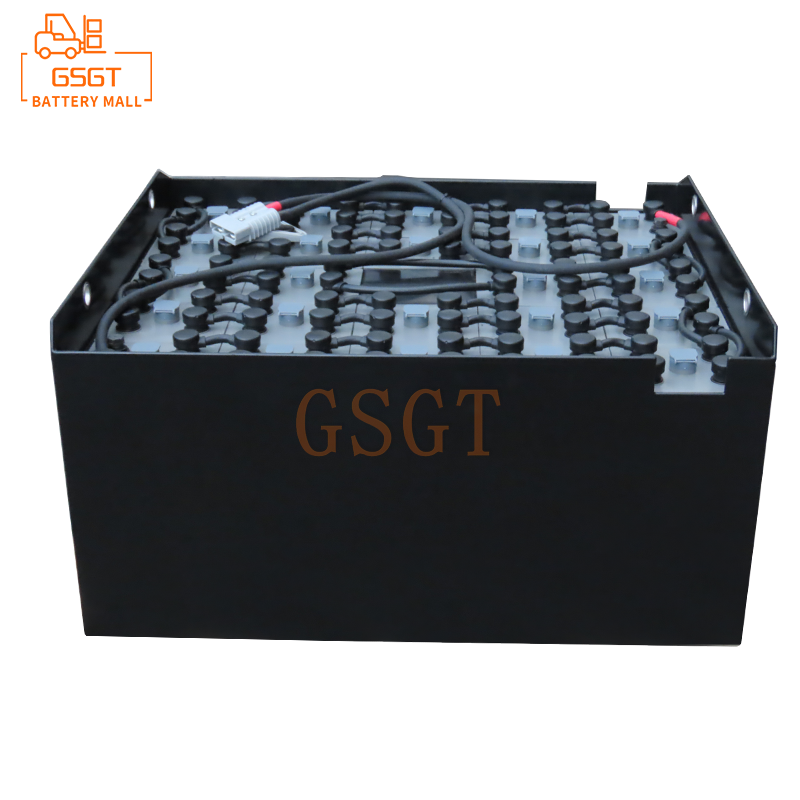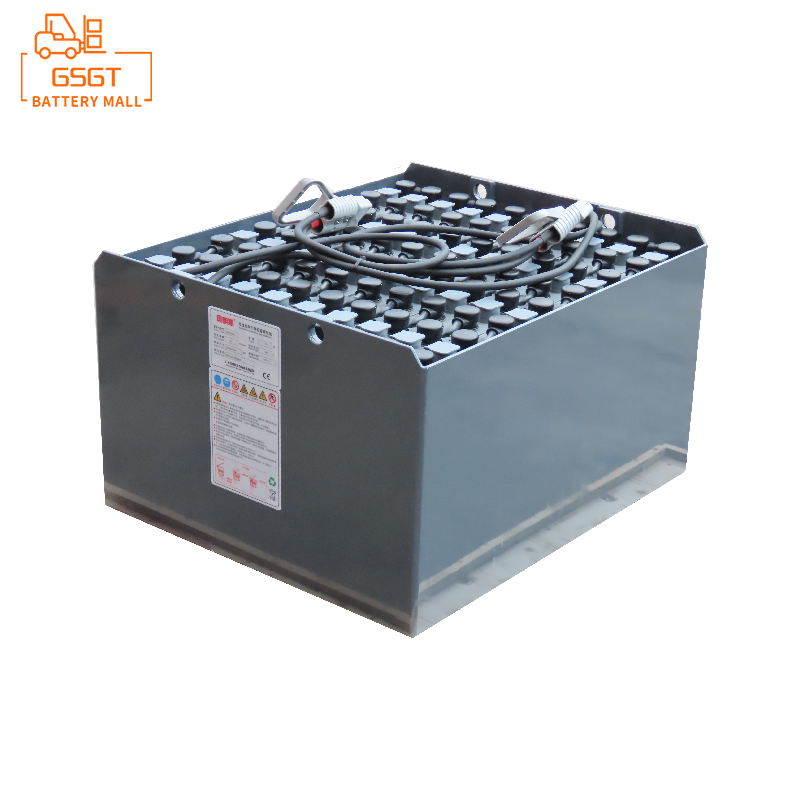Time:2025-07-10 10:38:00
Browse:623
In the daily operation of forklifts, lead-acid batteries are the core components that provide power. As the usage time increases, the capacity of the battery will gradually decline, which not only affects the working efficiency of the forklift but may also bring safety hazards. So, to what extent does the capacity of a forklift lead-acid battery decline before it needs to be replaced? This article will conduct a detailed discussion around this issue.
The criteria for judging capacity attenuation
Generally speaking, when the actual capacity of a forklift's lead-acid battery decays to 70% or less of its rated capacity, it is necessary to consider replacing it.
The rated capacity is the amount of electricity that a storage battery can output under standard conditions (usually 25℃, when discharged at a specified rate to the terminal voltage). When the actual capacity is less than 70% of the rated capacity, the endurance of the forklift will drop significantly and may not meet the normal working requirements. For instance, a forklift that could operate for 8 hours on a single charge might now only work for 5 hours or even less. Frequent charging can seriously affect the work progress.
At the same time, when the capacity decays to this extent, the charging and discharging performance of the battery will also become unstable. During the charging process, there may be situations such as excessively long charging time and severe battery heating. When discharging, a sudden voltage drop may occur, causing the forklift to suddenly lack power and affecting operational safety.
Answers to related questions
Question: How to detect the actual capacity of lead-acid batteries in forklifts?
Answer: The actual capacity of lead-acid batteries in forklifts can be tested by the discharge test method. The specific operation is as follows: After fully charging the battery, discharge it at the specified discharge current, record the discharge time, and then calculate the actual capacity based on the formula "Actual capacity = Discharge Current × discharge time".
When conducting discharge tests, the following points should be noted: Firstly, ensure that the test environment temperature is within the standard range (generally around 25℃). Both excessively high and low temperatures will affect the accuracy of the test results. Secondly, the discharge current should be set according to the specified discharge rate of the battery. The discharge rates of different models of batteries may vary. Finally, during the discharge process, closely monitor the voltage changes of the battery. When the voltage reaches the terminal voltage, discharge should be stopped immediately to avoid over-discharge causing damage to the battery.
In addition, there are now some professional battery testing devices, such as battery capacity testers, which can more quickly and accurately measure the actual capacity of the battery, providing a reliable basis for determining whether the battery needs to be replaced.
Question: What are the hazards if the capacity drops below 70% and is not replaced in time?
Answer: If the capacity of the lead-acid battery of a forklift drops below 70% and is not replaced in time, it will cause multiple hazards.
From the perspective of work efficiency, a decline in the battery life of forklifts, which requires frequent charging, will disrupt the normal work rhythm and reduce overall work efficiency. Especially in some scenarios where production tasks are tight, the production progress may be delayed due to insufficient power of forklifts.
From a safety perspective, unstable battery performance may cause safety accidents. For instance, during charging, if the battery gets too hot, it may lead to electrolyte leakage and even cause a fire. During operation, a sudden voltage drop may cause the forklift to stop working abruptly. If the forklift is handling heavy objects or is in a dangerous area at this time, accidents such as collisions and falls are highly likely to occur.
From an economic cost perspective, it is not cost-effective not to replace it in a timely manner. Batteries with severe capacity attenuation have reduced charging and discharging efficiency, which will increase power consumption. Moreover, if the battery operates in an abnormal state for a long time, it may cause damage to the charger and other related components of the forklift, increasing maintenance costs.
Factors affecting capacity attenuation
Understanding the factors that affect the capacity attenuation of lead-acid batteries in forklifts helps us better determine whether the battery needs to be replaced and take measures to delay the capacity attenuation.
Charge and discharge cycles: Lead-acid batteries have a certain charge and discharge cycle life, generally around 300 to 500 times. As the number of charge and discharge cycles increases, the active substances inside the battery will gradually fall off and age, resulting in capacity decline.
Charging method: Incorrect charging methods will accelerate the decline of battery capacity. For instance, overcharging can cause a large amount of gas to be generated inside the battery, leading to the loss of electrolyte and corrosion of the plates. Insufficient charging will cause sulfation of the battery plates, affecting battery performance.
Ambient temperature: Temperature has a significant impact on the capacity of the battery. In high-temperature environments, the chemical reactions inside the battery accelerate, which will speed up the corrosion of the plates and the evaporation of the electrolyte, thereby shortening the battery's lifespan. In a low-temperature environment, the capacity of a battery will temporarily decrease, and long-term use in low temperatures can also cause damage to the battery.
Maintenance and care: Lack of necessary maintenance and care will accelerate the decline of battery capacity. If distilled water is not added in time, it will lead to an excessively high concentration of the electrolyte, affecting the battery performance. If the battery surface is not clean, it may cause local short circuits and increase self-discharge.
Measures to delay capacity attenuation
Although the capacity decline of lead-acid batteries is inevitable, through correct use and maintenance, the rate of decline can be slowed down and their service life can be prolonged.
Standardized charging operation: Charge the battery in accordance with the battery manual to avoid overcharging and undercharging. When charging, ensure that the charging environment is well-ventilated and keep it away from fire and heat sources.
Regular maintenance and care: For maintainable batteries, it is necessary to regularly check the electrolyte level, add distilled water in a timely manner, and keep the electrolyte concentration within an appropriate range. At the same time, the surface of the battery should be cleaned regularly to remove dust and oxides and prevent local short circuits.
Use forklifts reasonably: Avoid operating forklifts when the battery is low. Try not to accelerate or decelerate suddenly and reduce large current discharge. This can reduce damage to the battery.
Pay attention to the ambient temperature: Try to ensure that the forklift operates and is stored in an appropriate temperature environment. When the temperature is high, take cooling measures; when the temperature is low, preheat it.
In conclusion, when the capacity of the lead-acid battery of a forklift drops to 70% or less of its rated capacity, it should be replaced in a timely manner to ensure the normal operation and operational safety of the forklift. At the same time, in daily use, it is necessary to do a good job in the maintenance and care of the battery to delay capacity attenuation and improve the battery's usage efficiency and lifespan.

$5880

$7660

$3160

$8340

MESSAGE
Professional And Efficient
Security
Affordable Price
Professional Services